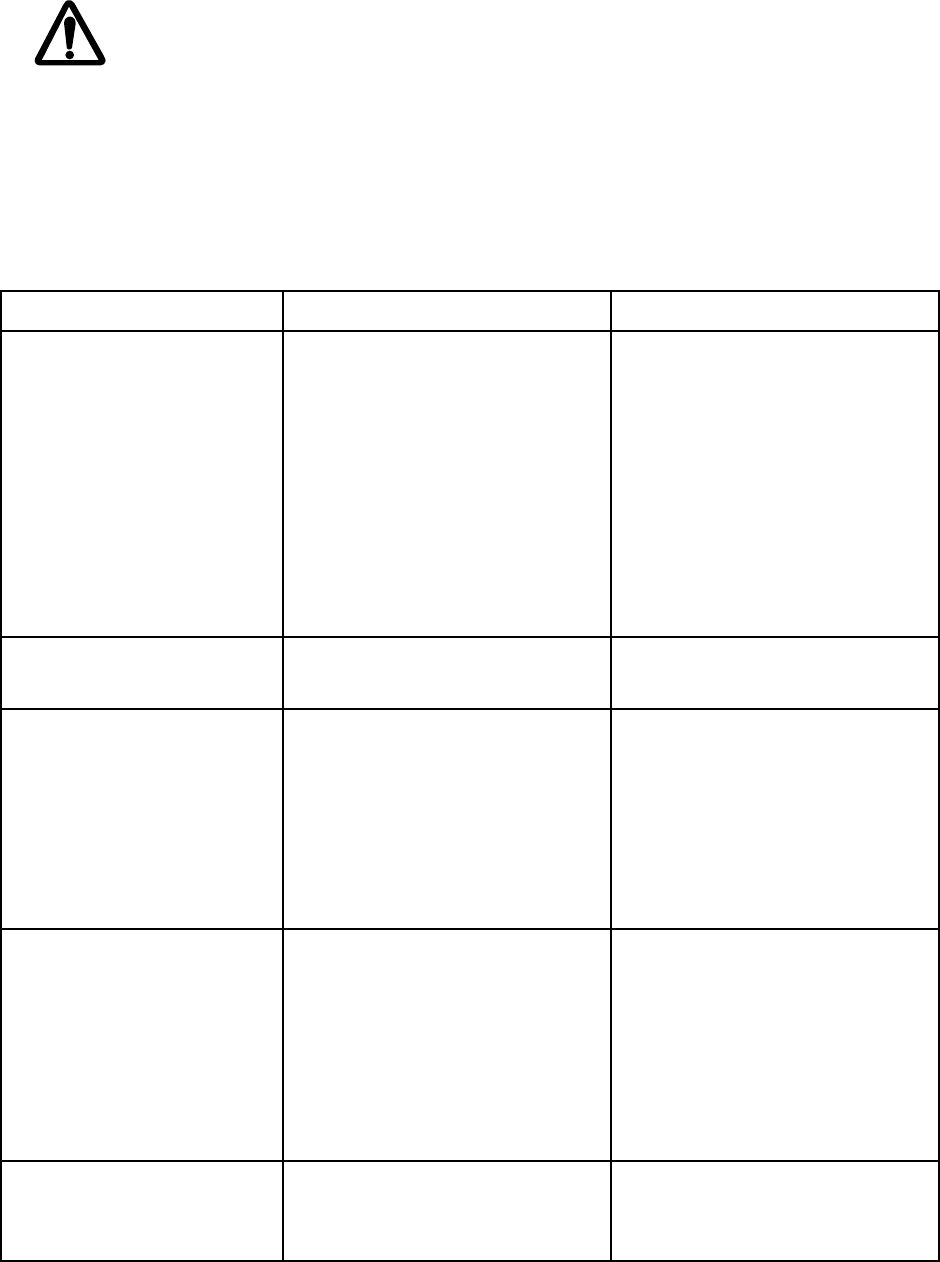
-5.1-
Chapter 5 TROUBLESHOOTING
5.1 Troubleshooting List
For qualified personnel only
The troubleshooting list below gives common symptoms of equipment malfunction and means to
restore normal operation. If you cannot restore normal operation, please do not check inside any
unit. Any repair is best left to a qualified radiotelephone technician. Improper handling or
adjustment may cause more serious damage.
Troubleshooting list
TROUBLE PROBABLE CAUSE REMEDY
Power can not be turned on The mains switchboard may be
off.
DC overvoltage input.
The battery may have
discharged, or poor contact at
terminals.
Check fuse on the power cable
or Power Supply Unit.
Turn on the mains switch.
Check supply voltage. It should
be less than 31.2V
Recharge battery and tighten
terminal connections.
Replace the blown fuses.
Frequency readout appears
but no lamps light
The [DIMMER] key may be
off.
Operate the [DIMMER] key.
Power is on but no sound
from loudspeaker
The [SPEAKER] key is off.
Volume may be too low.
Squelch is on.
Reduced RF Gain.
Press the [SPEAKER] key.
Adjust the VOLUME control.
Press the [SQ] key if "SQ"
appears on the display.
Turn the RF Gain control
clockwise.
Poor articulation Wrong class of emission may
be in use. (For example,
receiving signal in J3E mode.
J3E should be used only on
2182 kHz.)
Receiver detuned.
Select class of emission same as
that of incoming signal.
In Custom or ITU channel
mode, press the [CLARIFY]
key then fine tune frequency by
the FREQ/CH control.
Output power is reduced to
low ("LOW" indication
blinks)
Power is automatically reduced
to protect against overheating
due to continuous transmission.
Wait until the unit returns to
normal condition.


















